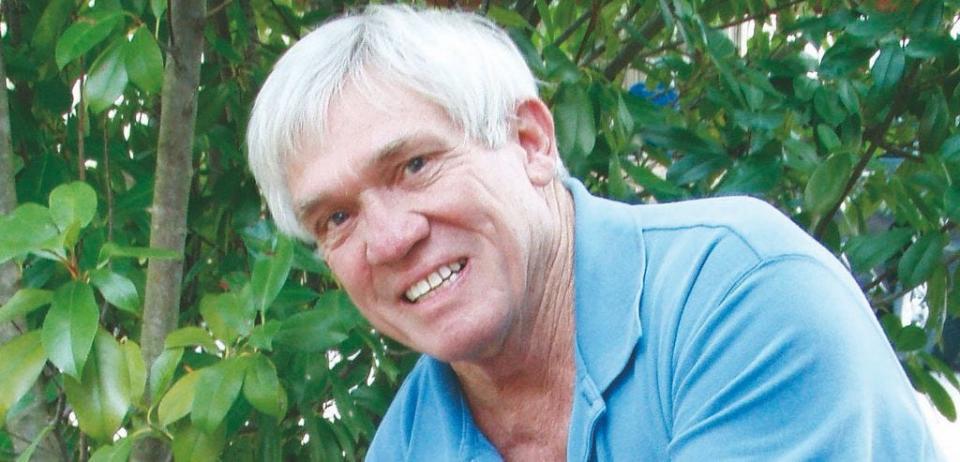Merlin app is pure wizardry for bird enthusiasts | ECOVIEWS
I heard a tune playing over a grocery store’s sound system but could not recall the name of song or singer. I opened the Shazam app on my phone and nodded to myself — “You Never Can Tell” by Chuck Berry.
Shazam’s song recognition capabilities are a marvel for anyone whose mind is eased by knowing who is singing what. Can you imagine having an app that does the same thing for bird calls? Imagine no more.
More: What happened to Franklinia in the wild? | ECOVIEWS
Thanks to the Merlin app, I can now identify some of my favorite musicians — birds. The app is produced by the Cornell Lab of Ornithology, a reliable group for dispensing information about birds. Many bird enthusiasts already have Merlin. When I run into people who do not, they tend to download it immediately. The Merlin app helps take the guesswork out of distinguishing one bird from another.
![A merlin, aka pigeon hawk, poses with its prey — a red-winged blackbird. [Photo provided by Andrew Lydeard]](https://s.yimg.com/ny/api/res/1.2/kfqi3JcxNI_i9xbF.ua4Ww--/YXBwaWQ9aGlnaGxhbmRlcjt3PTk2MDtoPTY0MA--/https://media.zenfs.com/en/the-tuscaloosa-news/2fb5a5aac348a4052f157197c44d88c9)
Merlin has a variety of features to aid in putting a name to any bird you observe — by sight or sound.
The Start Bird ID feature helps identify a bird you have seen. First you report date and location. You estimate body size based on silhouettes ranging from a sparrow to a goose. Questions about where you saw the bird (at a feeder, on a wire, in the air, etc.) and color pictures help further narrow the search. Armed with that information, Merlin creates a list of possible birds with an array of photographs and accompanying descriptions.
The Explore Birds feature narrows a search to a category of birds. “Woodpecker” calls up 16 species with photos. A minor failing is that two woodpeckers in my area — the flicker and the yellow-bellied sapsucker — do not show up on that list because “woodpecker” is not in the name. However, when Merlin was listening, it successfully identified every woodpecker by its call or its distinctive drumbeats on trees.
The overall effectiveness of Merlin in helping users identify and learn about birds is extraordinary. One slight problem is that the app can misidentify bird mimics. Andrew Lydeard of the University of Georgia’s Savannah River Ecology Lab was watching a blue jay that was imitating the call of a shrike. Merlin misidentified the call as a Nelson’s sparrow. Even an experienced ornithologist can make such a mistake if the calling bird is not visible.
Many naturalists who roam woods and fields are highly proficient at identifying birds by their colors and calls. However, if one claims to have heard a painted bunting in the distance, how is an amateur like me to know whether the claim is true?
I once saw such suspicions play out when Andrew told us he heard a yellow-throated vireo. Eyebrows were raised. Andrew headed into the woods, returning minutes later with a verification photo of the male vireo singing its heart out. Had I had Merlin at the time, I could have immediately assured the group that Andrew was correct.
I tested Merlin against another experienced birder, environmental educator John Byrd, as we sat on the porch of my cabin at Salleyland. I could recognize the call of a Carolina wren, whose big voice belies its small body size. The steady thumping of a pileated woodpecker in a dead tree was equally familiar.
But the woods were filled with music I did not recognize. I asked John to name the birds when he heard them so I could compare his IDs to Merlin. John named the wren and woodpecker immediately and for the next few minutes proceeded with “blue-gray gnatcatcher, red-eyed vireo” and a dozen others. I didn’t even hear some of the birds and didn’t recognize many of those I did. But Merlin and John were in sync.
That back-porch experiment gave me confidence in both John and Merlin. Obviously I can't take John Byrd around with me everywhere. I can take my cellphone with the Merlin app. It may not know bird calls better than John or Andrew, but it sure knows them better than me.

Whit Gibbons is professor of zoology and senior biologist at the University of Georgia’s Savannah River Ecology Laboratory. If you have an environmental question or comment, email ecoviews@gmail.com.
This article originally appeared on The Tuscaloosa News: Merlin app is pure wizardry for bird enthusiasts | ECOVIEWS

